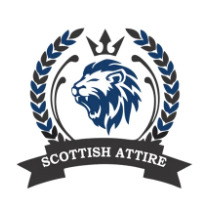Don't wanna be here? Send us removal request.
Text
Best Kilts for men
Our moral obligation is to keep discussing the kilt since the Scottish Attire website revolves around it. Thus, we have chosen to honor the kilt by distributing the final guide on kilts known as “The Kilt.” We will be talking about the origin, history, and modernization of kilts in “The Kilt,” as well as our minor participation in it.
The Kilt
Thus, let us first go over the 13 sweet secrets regarding kilts!
First, let’s discuss the word “kilt,” derived from the ancient Norse word “kjilt,” meaning “pleated,” so referring to a fabric tucked up and around the body.
Second, kilts have long cultural significance, tying them back to Scotland. In Scotland, most kilts are markers of patriotism.
Thirdly, Scottish Highlander men wore kilts as a full-length garment, first mentioned in 1538.
Fourth, the knee-length kilt worn nowadays was not accessible until the early 18th century.
Fifth, the first kilts were either white, brown, green, or black since the people of clans dyed wool only using plants, mosses, and berries; hence, only these colors were produced. New natural dyes brought more hues as time went on.
Sixth, Highland men started to really like belted plaids, now known as Great Kilts. In Gaelic, it was called “breacan-an-feileadh,” a tartan wrap.
Seventh, down to the ankles, was a female variation of the Great Kilt known as an arisaid. Earlier designs were created using a wide-spaced pattern on white tartan cloth.
Eighth, the bottom half of the kilt, known as a phillabeg, was first worn in the late 17th century. It was gathered into folds, then belted at the waist, barely above the knee. For warmth and protection, people covered their shoulders with separate clothing.
In 1746, King George II instituted the Dress Act to stifle Highland culture. Highland regiments were forbidden from wearing any sort of Highland attire, including the tartan kilt, under the act. The ban lasted for thirty-six years, but the kilt came to represent Scottish identity permanently once it was lifted in 1782.
Tenth, tartan began to represent various clans, families, and areas; today, there are roughly 3,500 unique tartan family plaids. Making a tartan takes 20 to 25 hours; most of them are handcrafted.
Eleventh, typically made of 8 yards of fabric (some prefer light kilts), a kilt features 29 pleats.
Usually accompanying a kilt is a sporran, sometimes known as a kilt pouch, worn around the waist over the kilt. Leather sporrans, semi-dress sporrans, and full-dress sporrans are among the several variations in sporrans.
Thirteenth, people also carry a Sgian Dubh (skee-an doo), a little dagger kept in the sock, and a kilt pin holding the two pieces together.CHECK OUT BEST KILTS
0 notes
Text
https://scottishattire.com/kilts-for-men
0 notes
